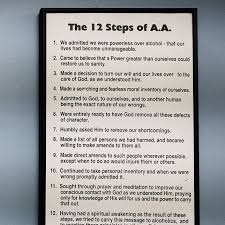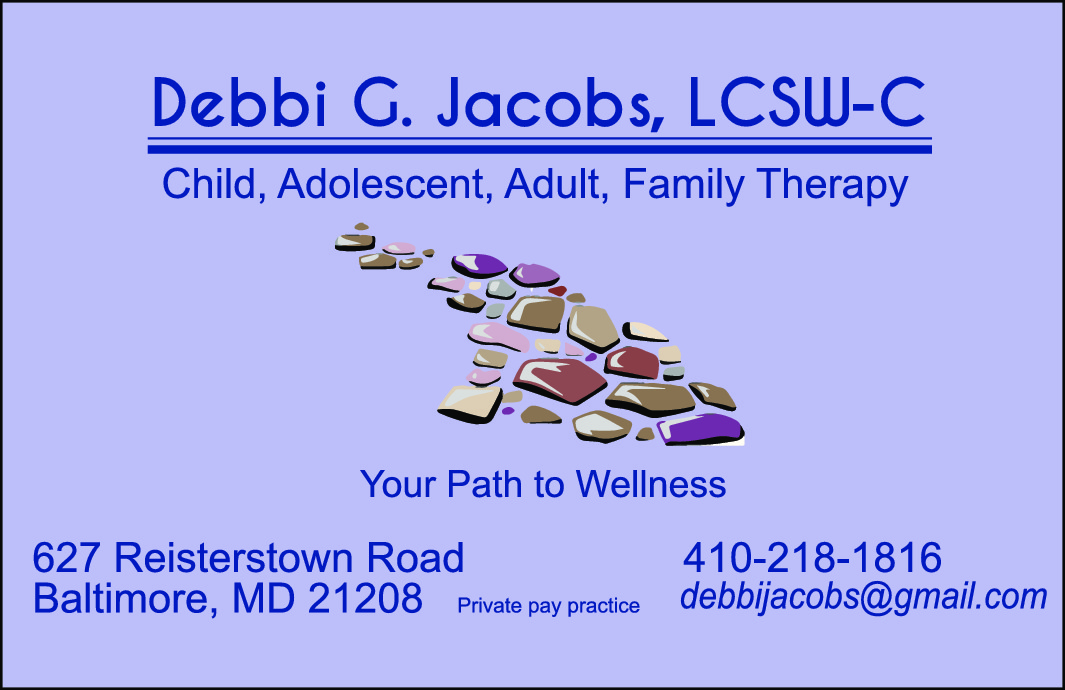
Addiction is not a new phenomenon, but it has unfortunately become more “popular” in recent years, affecting all communities, including our Jewish community. The Twelve Step programs to conquer addiction are also not new. But, although eclipsed in the public view by all sorts of other approaches and treatment methods, they remain just as relevant and effective as in the past for those who choose to participate.
* * *
Alcoholics Anonymous (AA) was the first Twelve Step program, established in 1935. Its cofounders, Bill Wilson and “Dr. Bob” Smith, dedicated their lives to advancing the belief that alcoholism was not a result of poor upbringing or faulty morals but, rather, a spiritual malady that manifested itself in the form of a behavior driven by obsession and compulsion. They believed that the disease was incurable but that it could be arrested one day at a time – not by proselytizing to other troubled alcoholics but by sharing their struggles and successes with each other, and by relying upon a Higher Power (of their own conception). These means, they believed, would give them the power, wisdom, and protection they needed to deal with life without alcohol.
Today, there are Twelve Step programs for addictions not only to alcohol but also to drugs, food, gambling, codependency, debt and under-earning, workaholism, online gaming, nicotine, cluttering, among others. There are also programs, like Al-Anon, for those in a relationship with an addict, whose members admit to eventually taking on many of the unpredictable, codependent, or dishonest behaviors of the addicts themselves.
* * *
Almost every family has a member who suffers from one or more of these conditions, whether they are “in recovery” or not. Some people are predisposed to having them. Others “acquire” them. What differentiates a person “with a problem” from one with an addiction? Usually, addicts suffer greatly from knowing that despite their best efforts, they’ve had little success stopping their self-destructive behavior. The harder they try and fail, the greater the internal turmoil.
A person with a sweet tooth may eat a few too many pieces of candy, but they won’t obsess about the next time they’ll have another. They won’t drive into a rainy night to get more or hide stashes in places that only they know about. They won’t keep eating until it’s all gone.
Addiction is progressive. As time goes on, there is less pleasure or relief from “indulging” and more physical, mental, and emotional suffering in the aftermath. Addicts will lie when questioned about their dependency or resent those who are merely concerned about their welfare. They feel a need to keep the secret while harboring shame.
Addicts undergo personality changes, becoming withdrawn, self-conscious, or defiant. School or work habits may suffer. They may become less reliable and more inconsistent or irresponsible. Adult addicts may become reckless with family funds to fuel their addiction. Sometimes, in an effort to bolster their own self-esteem, parents will be very strict with their kids or try to control aspects of their lives in other ways. Sometimes children find themselves forced into a role of caretaker for an ailing parent.
* * *
Twelve Step recovery is designed to bring increasing levels of awareness so the sufferer gradually sees the extent of the physical, emotional, and spiritual damage that their addiction has wrought, and learns ways to change their thinking and behavior so they can make it through a day without resorting to relief-seeking behavior. The process is difficult – but liberating as well.
Each Twelve Step Fellowship patterns its steps after the Twelve Steps created by AA. These are the Twelve Steps with a short explanation:
1) We admitted we were powerless over (alcohol), that our lives had become unmanageable. In order to take Step One, an addict usually has to “hit bottom.” Paradoxically, this admission of powerlessness enables them to seek and find the power to change their behavior.
2) We came to believe that a Power greater than ourselves could restore us to sanity. Step Two requires the addict to see their actions as so irrational that they need to be “restored to sanity” and identify what they would seek from their Higher Power to allow that to happen.
3) Made a decision to turn our will and our lives over to the care of G-d as we understood Him. Once an addict “comes to believe” in their Higher Power, they are encouraged to surrender the temptation to worry or control people or events, and to trust that their “HP” will guide their lives in the direction of their greatest good.
4) Made a searching and fearless moral inventory of ourselves. This exercise in self-reflection reveals experiences, losses, betrayals, or disappointments that interrupted healthy emotional development and compromised the addict’s coping abilities. Many resentments are revealed and better understood during this clarifying process.
5) Admitted to G-d, to ourselves, and to another human being the exact nature of our wrongs. This asks the addict to share their insights with a sponsor or confidante. The willingness to reveal one’s true self without fear of rejection brings greater self-acceptance and deepens one’s relationship with his or her Higher Power. It brings a newfound sense of belonging.
6) Were entirely ready to have God remove all these defects of character. Turns out that just knowing that one is judgmental or avoids getting close to people because they fear being hurt doesn’t make it go away. The addict is as powerless over his defects as he is over his addiction, and G-d can and will remove these defects if asked.
7) Humbly asked Him to remove our shortcomings. Humility is an essential ingredient in cultivating gratitude for one’s recovery. It can prevent a person from becoming complacent and Easing G-d Out (E-G-O) of the process.
8) Made a list of all persons we had harmed, and became willing to make amends to them all. Addicts review situations where their fear and self-centeredness affected others. They are discouraged from making apologies prematurely because one must have the right attitude before making amends. Some people on the list may have acted badly as well, but addicts must develop the willingness to own up to their own misdeeds while adopting a spirit of forgiveness toward those who may have harmed them. After all, it took a Twelve Step program to open the addict’s eyes, so expecting a troubled person without a recovery program to achieve the same sort of self-awareness is unlikely.
9) Made direct amends to such people wherever possible, except when to do so would injure them or others. Discretion is necessary. Making amends is not about gaining approval or popularity. By taking responsibility and demonstrating empathy toward those they’ve harmed, addicts find that most people respond kindly and generously to such revelations.
AA’s “Big Book” describes the recovery process of the first 100 sober alcoholics. There’s a passage in it called “The Promises” that describes what happens when a recovering person reaches Step Nine. It’s a remarkably powerful assertion:
If we are painstaking about this phase of our development, we will be amazed before we are half way through. We are going to know a new freedom and a new happiness. We will not regret the past nor wish to shut the door on it. We will comprehend the word “serenity” and we will know peace. No matter how far down the scale we have gone, we will see how our experience can benefit others. That feeling of uselessness and self-pity will disappear. We will lose interest in selfish things and gain interest in our fellows. Self-seeking will slip away. Our whole attitude and outlook upon life will change. Fear of people and of economic insecurity will leave us. We will intuitively know how to handle situations which used to baffle us. We will suddenly realize that G-d is doing for us what we could not do for ourselves;
Are these extravagant promises? We think not. They are being fulfilled among us,
sometimes quickly, sometimes slowly. They will always materialize if we work for them.
As you can imagine, these changes are as thrilling as they are empowering, and it rightly bolsters the motivation of the addict to complete what are called the “Maintenance Steps.”
10) Continued to take personal inventory and when we were wrong promptly admitted it. This hones the art of daily reflection and objectively assessing situations that affect one’s moods and thoughts. It facilitates the resolution of difficulties with others when called for or confirms that one may not have to make amends at all.
11) Sought through prayer and meditation to improve our conscious contact with G-d, as we understood Him, praying only for knowledge of His will for us and the power to carry that out. Seeking peace, calmness, inspiration, and direction from G-d reduces impulsivity and reactivity, and it increases the ability to see opportunities for growth in the face of adversity, and that our Higher Power may even be using it as a catalyst for much needed change.
12) Having had a spiritual awakening as the result of these Steps, we tried to carry this message to (alcoholics), and to practice these principles in all our affairs. Twelve Step programs connect people by a common weakness, and they teach them how to get well through altruism and fellowship. One never “outgrows” or graduates from a Twelve Step program. Recovering people become stewards for the next generation of newcomers.
* * *
Addicts are encouraged to go to meetings, get a sponsor, read recovery literature, and learn to “ask for help” from fellow addicts and from their Higher Power. They develop a network of support so that in moments of weakness they can share their difficulties with someone who truly understands. Gradually, bad habits are replaced with better ones and that changes one’s thinking.
As we Jews did during Pesach, addicts share their redemption from the slavery of addiction and, in doing so, get to retain the gifts they’ve received. Twelve Step recovery is remarkably compatible with Torah in other ways as well. Indeed, Rabbi Dr. Abraham Twerski, a psychiatrist and founder of Gateway Rehabilitation Center in Pittsburgh, one of America’s leading facilities for addiction treatment, is an ardent supporter of Twelve Step programs.
Unfortunately, many frum Jews find that, despite a lifetime of religious observance, they fall prey to addiction. Twelve Step fellowship enables them to recalibrate and harness their spiritual sensibilities to effectively channel them in a positive direction. Most report that they are more engaged in their relationship with Hashem as they become more integrated, happier people.
So now you know a little bit about what Twelve Step recovery is about. In the next article, we’ll get into what it’s like to actually “work a Twelve Step program” on a daily basis.
Until then, if you have any questions, send them to neilrauch@comcast.net.






